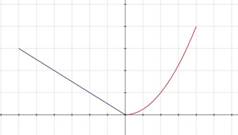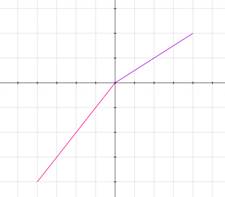A function that is defined by two or more different subfunctions is piecewise-defined. Each subfunction applies on its own portion of the piecewise-defined function’s domain (or, its own subdomain).


Evaluating Piecewise-Defined Functions
In order to evaluate a piecewise-defined function at a particular point, it is necessary to determine which of the function’s subdomains contains the point.
Rules
Examples

Find f(-3) and (0)
Explanation

As in the last example, it is important to be careful when reading the subdomain of each subfunction in the function. Both subdomains contain 0, but only the domain of x2 includes 0. This is usually a matter of taking note of whether the domain is expressed with <,> or ≤,≥.
Domain of Piecewise-Defined Functions
The domain of a piecewise-defined function is a combination of its subfunctions’ individual subdomains.
Examples

Explanation

If there are one or more points in one or more subdomains at which the function is not defined, the function is said to be discontinuous at those points.
Graphing Piecewise-Defined Functions
Graphing these functions is a matter of graphing each component subfunction on its subdomain.
Examples

Explanation

Try these exercises:
Instructions

Evaluate f(0)

Find f(-1)

Find f(0)
- The absolute value function
 is a piecewise-defined function. Express it in function notation.
is a piecewise-defined function. Express it in function notation.

Find the domain of h(x).

Find the domain of f(x).

Find the points at which g(x) is discontinuous.
- Graph

- Graph

- Graph

Answers to questions


 is undefined.
is undefined.






